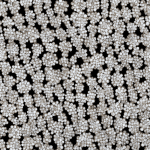In the rapid and dynamic world of technology, it’s fascinating to see how different technologies intertwine to create something new and innovative. One such intriguing intersection is between 3D printing technology and drone design. Technological advancements are shaping the future, and 3D printing is playing a significant role in the development of the drone industry. The combination of these two technologies is pushing the boundaries of what’s possible, innovating in terms of design, manufacturing, and even the performance of drones.
3D Printing and Drone Design
3D printing, also known as additive manufacturing, has revolutionized the way objects are created. It uses computer control to lay down successive layers of material until the desired object is produced. When it comes to drone design, this technology has allowed for a level of customization and innovation that was previously unattainable.
Dans le meme genre : What Is the Potential for Solar-Powered Recreational Drones?
The implications of 3D printing in drone design are widespread, from the development of prototypes to the creation of fully functional parts. Designers can quickly and affordably produce different drone models, test them, and make necessary adjustments. This rapid prototyping can significantly speed up the overall development time and encourage more experimentation with designs.
Influence on Manufacturing and Production
The influence of 3D printing technology extends beyond the drone design process to the manufacturing and production phase. Traditional manufacturing methods often require expensive tooling and a considerable amount of time. However, 3D printing technology allows for a more straightforward and more cost-effective production process.
Cela peut vous intéresser : What Are the Most Effective Anti-Theft Technologies for Drones?
Producing drone parts using 3D printing technology is quicker and more efficient, reducing the mass and weight of the drones, which is a critical factor in their performance. By minimizing the weight, drones can fly longer and carry more, expanding their potential uses.
Moreover, 3D printing allows for on-demand production. Rather than storing a vast inventory of parts, companies can print parts as needed, reducing storage costs and waste. This just-in-time production method fits perfectly within the fast-paced and ever-changing drone market, where new models and updates are continually being introduced.
Materials Used in 3D Printed Drones
3D printing technology has also expanded the variety of materials that can be used in drone manufacturing. Traditional manufacturing methods limit the materials that can typically be used due to restrictions in moulding processes. However, with 3D printing, a wide range of materials can be used, including plastics, metals, and even composites.
These materials can be chosen based on their specific properties to meet the requirements of each drone. For example, a lightweight but strong material will be ideal for drones that need to carry heavy payloads or withstand harsh conditions. Moreover, using different materials can optimize different parts of the drone, such as the arm, where strength and flexibility are crucial.
Top Drones Using 3D Printing Technology
Numerous drone manufacturers are harnessing the power of 3D printing technology to improve their products. Among the top is Skydio, a U.S. drone manufacturer. Through 3D printing, Skydio has managed to build drones that are lighter, stronger, and more efficient. They even produced a drone, Skydio 2, that uses 3D printed parts to achieve higher performance, a testament to the potential of this technology.
The Future of Drones and 3D Printing
The union of drones and 3D printing technology promises a future where drones will be more versatile, efficient, and customizable. As 3D printing technology continues to advance, it will enable more complex and intricate designs, pushing the boundaries of what drones can achieve. The future may even see drones printing their parts in real-time, reducing downtime and making drones more self-sufficient.
Although we cannot predict the future with certainty, one thing is clear: 3D printing technology will continue to have a tremendous influence on drone design and manufacturing. As we continue to explore and push the limits of these technologies, who knows what possibilities will emerge.
The Impact of Additive Manufacturing on Drone Components and Systems
Additive manufacturing, also known as 3D printing, is changing the game in the drone industry. The technology’s ability to produce intricate and lightweight components is reshaping not just the drone’s frame but also its internal systems.
For instance, when constructing a drone frame, manufacturers must balance strength and weight. A heavy frame will limit the drone’s flight time and maneuverability while a weak frame will be prone to damage. Traditional manufacturing methods have always struggled with this compromise. However, 3D printing technology has made it possible to create frames that are both strong and lightweight. This is achieved by using materials such as carbon fiber, which has a high strength-to-weight ratio, and by utilizing designs that would be impossible with traditional manufacturing techniques.
In terms of the drone’s internal systems, additive manufacturing has allowed for the development of custom parts and mechanisms. For example, quantum systems, which are essential for the navigation and control of unmanned aerial vehicles, can now be made more efficiently using 3D printing. By printing these systems, they can be designed to perfectly fit the drone’s frame, reducing unnecessary weight and increasing the overall efficiency of the drone.
Additive manufacturing also plays a significant role in the design development of drones. The technology allows for rapid prototyping, which means drone companies can swiftly test and tweak their designs. This accelerates the design process, reduces costs, and leads to the production of better-performing drones.
Educating the Next Generation of Drone Engineers
3D printing technology is not just influencing the drone industry; it’s also reshaping the education sector, particularly engineering. In the school of engineering, 3D printing has become an invaluable tool for teaching students about the design, development, and production of drones.
With 3D printers, students can take their designs from the computer screen to the physical world quickly and at a low cost. This hands-on experience provides students with a deeper understanding of the engineering principles behind drone technology.
Moreover, students can experiment with different materials for their printed drone. From plastics to metals to composites, they can explore how each material impacts the weight, strength, and performance of the drone. This practical knowledge is invaluable as they progress into their careers in the drone industry.
Conclusion
The intersection of 3D printing technology and drone design is reshaping the drone industry. From the design and production of drone parts to the education of future drone engineers, the influence of additive manufacturing is widespread and profound.
This technology enables the production of lighter, stronger, and more efficient drones, expanding their potential applications. It also fosters innovation within the industry, as companies can swiftly test and tweak their designs. Furthermore, it provides the next generation of engineers with practical, hands-on experience in designing and producing drones.
As we look to the future, we can expect the influence of 3D printing technology on the drone industry to only grow. As the technology continues to advance, the design and manufacturing possibilities will expand, opening up new horizons for the use of drones. With 3D printing technology, the sky is truly the limit.











